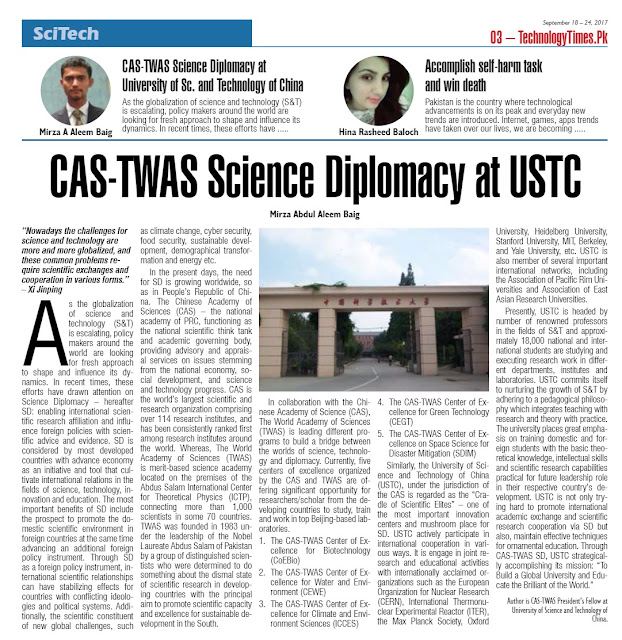“Nowadays
the challenges for science and technology are more and more globalized, and
these common problems require scientific exchanges and cooperation in various
forms.” – Xi Jinping
As the globalization of
science and technology (S&T) is escalating, policy makers around the world
are looking for fresh approach to shape and influence its dynamics. In recent
times, these efforts have drawn attention on Science Diplomacy – hereafter SD:
enabling international scientific research affiliation and influence foreign
policies with scientific advice and evidence. SD is considered by most developed
countries with advance economy as an initiative and tool that cultivate
international relations in the fields of science, technology, innovation and
education. The most important benefits of SD include the prospect to promote
the domestic scientific environment in foreign countries at the same time advancing
an additional foreign policy instrument. Through SD as a foreign policy
instrument, international scientific relationships can have stabilizing effects
for countries with conflicting ideologies and political systems. Additionally,
the scientific constituent of new global challenges, such as climate change,
cyber security, food security, sustainable development, demographical
transformation and energy etc.
In the present days,
the need for SD is growing worldwide, so as in People’s Republic of China. The
Chinese Academy of Sciences (CAS) – the national academy of PRC, functioning as
the national scientific think tank and academic governing body, providing
advisory and appraisal services on issues stemming from the national economy,
social development, and science and technology progress. CAS is the world’s
largest scientific and research organization comprising over 114 research
institutes, and has been consistently ranked first among research institutes
around the world. Whereas, The World Academy of Sciences (TWAS) is merit-based
science academy located on the premises of the Abdus Salam International Center
for Theoretical Physics (ICTP), connecting more than 1,000 scientists in some
70 countries. TWAS was founded in 1983 under the leadership of the Nobel Laureate
Abdus Salam of Pakistan by a group of distinguished scientists who were
determined to do something about the dismal state of scientific research in
developing countries with the principal aim to promote scientific capacity and
excellence for sustainable development in the South.
In collaboration with
the Chinese Academy of Science (CAS), The World Academy of Sciences (TWAS) is
leading different programs to build a bridge between the worlds of science,
technology and diplomacy. Currently, five centers of excellence organized by
the CAS and TWAS are offering significant opportunity for researchers/scholar
from the developing countries to study, train and work in top Beijing-based
laboratories.
1.
The CAS-TWAS Center of Excellence for
Biotechnology (CoEBio)
2.
The CAS-TWAS Center of Excellence for
Water and Environment (CEWE)
3.
The CAS-TWAS Center of Excellence for
Climate and Environment Sciences (ICCES)
4.
The CAS-TWAS Center of Excellence for
Green Technology (CEGT)
5.
The CAS-TWAS Center of Excellence on
Space Science for Disaster Mitigation (SDIM)
Similarly, the
University of Science and Technology of China (USTC), under the jurisdiction of
the CAS is regarded as the “Cradle of Scientific Elites” – one of the most
important innovation centers and mushroom place for SD. USTC actively
participate in international cooperation in various ways. It is engage in joint
research and educational activities with internationally acclaimed
organizations such as the European Organization for Nuclear Research (CERN),
International Thermonuclear Experimental Reactor (ITER), the Max Planck
Society, Oxford University, Heidelberg University, Stanford University, MIT,
Berkeley, and Yale University, etc. USTC is also member of several important
international networks, including the Association of Pacific Rim Universities
and Association of East Asian Research Universities.



No comments:
Post a Comment